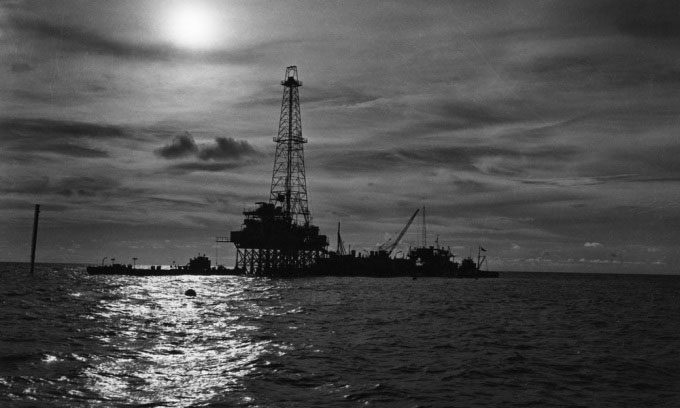Inactive wells are estimated to require $30 billion to seal, potentially releasing methane, oil, or other pollutants into the environment.
When oil and gas wells are no longer in use, the operator must seal them to prevent leaks. However, approximately 14,000 inactive wells in the U.S. waters of the Gulf of Mexico remain unsealed, as reported by Smithsonian on May 16. A new study has been published in the journal Nature Energy.

An extraction well in the Gulf of Mexico, off the coast of Louisiana. (Photo: Louisiana Bettmann).
The research team estimates that sealing all of these wells, typically using cement, could cost up to $30 billion. While unaddressed, they can pose environmental hazards.
Inactive wells that have not been sealed can release methane, oil, or other pollutants. These substances can be detrimental to ecosystems and human health if they leak in large quantities, according to energy economist Mark Agerton at the University of California, Davis, a co-author of the study. “We don’t want those substances in our drinking water, food, or on the ground, right next to us,” he stated.
The team analyzed data on 82,000 oil and gas wells in the Gulf of Mexico from the Bureau of Safety and Environmental Enforcement (BSEE) as well as other databases. They discovered a significant number of inactive wells in offshore waters, inland waters, and wetlands.
David Pettit, a lawyer for the nonprofit Natural Resources Defense Council (NRDC), believes it is unlikely that all of these inactive wells will be sealed due to financial issues.
However, the research team suggests that focusing on wells in shallow waters could be an effective way to mitigate risks. They found that 90% of the inactive wells are located in shallow waters, and sealing them would only cost a quarter of the total estimated expenses.
Wells in shallow waters should also be prioritized because they pose greater environmental risks. Coastal pollution can more easily destroy coastal ecosystems. Methane leaking from wells in shallow waters can also easily rise to the surface and enter the atmosphere, according to energy expert Gregory Upton at Louisiana State University, another co-author of the study.
However, if the U.S. continues to pivot and reduce its use of fossil fuels, the enormous costs associated with sealing all unused oil and gas wells in the Gulf of Mexico will increase. The research team hopes that this new study will provide information to address the challenges related to well sealing costs.


















































